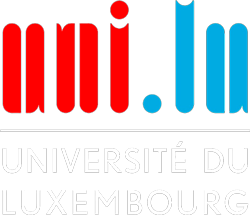LUXATLAS – The first digital and interactive historical Luxembourg town atlas
From fortress town to international metropolis
Over the years, Luxembourg has undergone particularly profound changes compared to other European cities. A medium-sized fortress town until 1867, it developed into a modern European capital in the early 20th century. After the Second World War Luxembourg then became one of three main administrative centres of the European Union. Today, it is an international financial centre and the economically, politically, and culturally most significant city in the Greater Region with a distinct cosmopolitan flair.
The historical town atlas as an innovative research tool
The history of this urban development, its conditions and characteristics, and the underlying economic, social and political conditions is a goldmine of information. A historical town atlas is the ideal tool for dealing with spatial issues. It brings together a collection of maps, explanatory texts, and chronological tables and images, which all trace the history of a city and illustrate the stages of its development. The aim of LUXATLAS, a digital project being carried out by the University of Luxembourg, is to create such a tool. A digital and interactive historical atlas makes available research findings from a variety of disciplines such as history and geography. Moreover, it combines relevant information and data from national authorities and cultural institutions. It therefore provides a better understanding of the historical process of change from the 19th to the 20th centuries, including the histories of buildings, streets, neighbourhoods and urban quarters.
A website for both researchers and the general public
The implementation of a digital and interactive atlas requires the development of new publication standards, making use of the opportunities of online publication and meeting the stringent demands of potential ‘users’ in a clear and self-explanatory way.
Users can dive into the history of the city via mouse or touchscreen control, zooming in on individual plots, freely combining different time periods, revealing vanished buildings and older structures and displaying explanatory information and images.
The website can be accessed online: https://www.luxatlas.lu
To further enhance and enrich the advantages of this historical atlas tool, the researchers seek ongoing successful cooperation with our partners first of all the Lëtzebuerg City Museum and several municipal institutions such as the Municipal Archives, the Departments of Urbanism, Topography and Geomatics, the Photothèque as well as the National Archives, the Luxembourg Commission for Cooperation with UNESCO, Cadastre and Topography Administration and Sebastian Pauli Geoinformatics.
